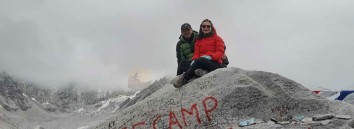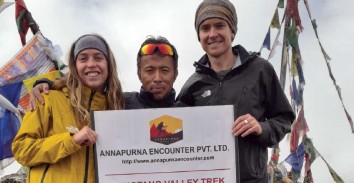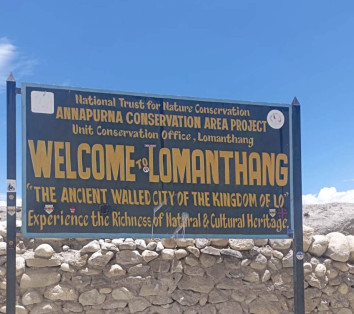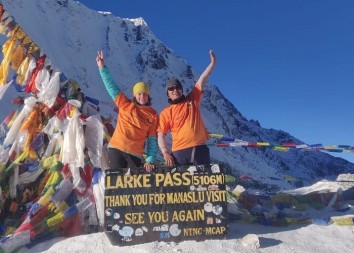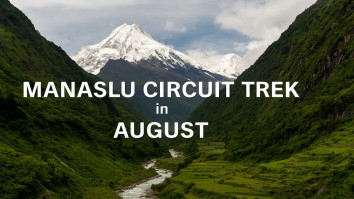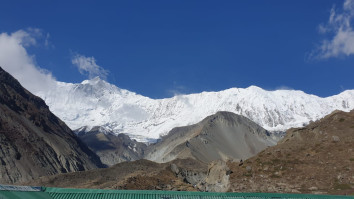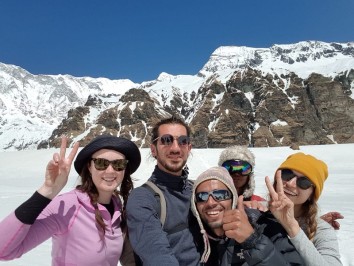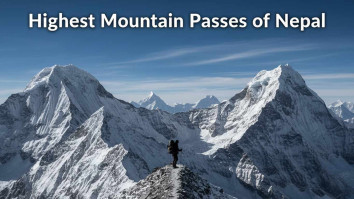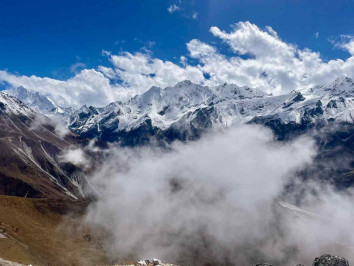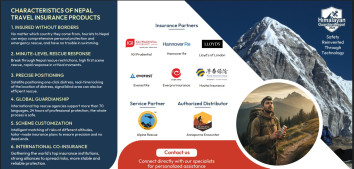Trekking in Nepal in April - Pros and Cons
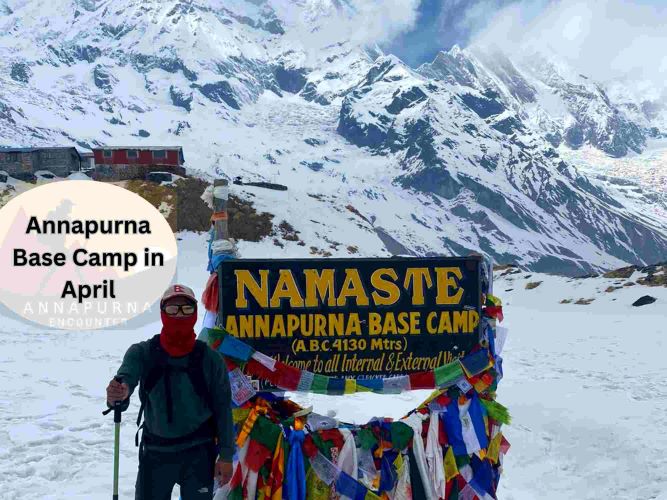
5th Feb, 2024
- annapurnaencounter
Imagine breath-taking landscapes, towering peaks, and a sense of adventure that lingers in the air. Nepal, the land of the Himalayas, offers numerous opportunities for trekking enthusiasts. With its diverse terrain and awe-inspiring beauty, Nepal is a haven for trekkers from around the world. But it comes to choosing the right time for your trekking adventure, the question arises - is April a good time to embark on a trekking expedition in Nepal? In this blog, we will explore the perks and considerations of trekking in Nepal during the month of April.
Table of Contents
Weather in April
April, the spring season in Nepal, brings a magical transformation to the Himalayan landscape. With the winter retreat, the mountains shed their snowy blankets, and vibrant colors burst forth. Here are some compelling reasons why April is considered a favorable month for trekking in Nepal:
1. Breathtaking Blooms
April is the month when nature showcases its artistic prowess. Rhododendrons, Nepal's national flower, paint the hills and mountains with hues of pink, red, and white. The picturesque landscapes are adorned with cherry blossoms, magnolias, and wildflowers, creating a visual feast for trekkers. The vibrant colors against the backdrop of snow-capped peaks add a touch of ethereal beauty to your trekking experience.
2. Moderate Weather
April offers the perfect balance between the chilly winter and the scorching summer. The weather is generally mild and stable during this time, with lower chances of rainfall compared to the monsoon season. The average daytime temperatures range from 10 to 25 degrees Celsius (50 to 77 degrees Fahrenheit), making it comfortable for trekking. The clear skies and pleasant temperatures allow for spectacular views of the Himalayas, ensuring an unforgettable trekking experience.
Popular Treks in April
Everest Base Camp Trek
The Everest Base Camp Trek is the epitome of adventure, attracting countless trekkers from around the world. In March, the trail to Everest Base Camp comes alive, adorned with vibrant rhododendron forests and a moderate climate. The views of Mount Everest, Lhotse, and Ama Dablam are simply awe-inspiring, making every step worthwhile. However, it is essential to be prepared for varying weather conditions, as snowfall might still occur in higher altitudes. Overall, March offers a fantastic opportunity to witness the Everest region ablaze with natural beauty.
Annapurna Base Camp Trek
The Annapurna Base Camp Trek is another popular choice among trekkers visiting Nepal. March brings pleasant weather, allowing trekkers to enjoy the panoramic views of Machapuchare (Fish Tail), Annapurna South, Gangapurna, and Hiunchuli. The trail takes you through lush forests, charming villages, and terraced fields of blooming Rhododendrons. It's a visual feast for nature lovers and a perfect time to capture incredible photographs. However, it is crucial to pack warm clothing as temperatures can drop significantly during the nights.
Langtang Valley Trek
For those seeking a less crowded but equally mesmerizing trekking experience, Langtang Valley Trek is an ideal choice. In March, the Langtang region showcases its breathtaking landscapes, with the rhododendron forests in full bloom. As you ascend, you'll be greeted by snow-capped peaks, including Langtang Lirung and Ganesh Himal. The moderate temperatures and clear skies make it an excellent opportunity to explore the unique Tamang culture and interact with the warm-hearted locals
Upper Mustang Trek
Upper Mustang, a restricted area requiring special permits since opening to foreigners in 1992, limits visitors to preserve its unique culture. The trek unveils ancient Tibetan-influenced villages with well-preserved monasteries and mud-brick houses, showcasing the region's distinct cultural identity. Culminating in Lo Manthang, the former Kingdom of Lo's capital, trekkers explore a walled city with a Royal Palace, monasteries, and vibrant festivals. The journey traverses diverse landscapes, from deep canyons to picturesque valleys, offering views of snow-capped peaks like Annapurna. Known for ancient cave paintings and archaeological sites, the trek combines historical significance with the challenge of high-altitude passes, reaching elevations above 3,800 meters. Teahouse accommodations, though basic, enhance the social trekking experience.
Cultural Festivals in March
Trekking in Nepal offers not only awe-inspiring scenery but also a chance to immerse yourself in the rich cultural tapestry of the region.
Bisket Jatra -
One of the notable features of Bisket Jatra is the raising of a large ceremonial pole known as "Yosin" or "Yosin Thanegu" in various locations within the Kathmandu Valley. The pole is erected with much enthusiasm, and its installation is accompanied by cultural and religious ceremonies.It is a vibrant celebration symbolizing the beginning of the Nepalese New Year, with significant community participation and rituals.
Ghode Jatra - The Festival of Horses
The Ghode Jatra festival, held in Kathmandu, showcases horse racing and cultural performances. Witnessing this extraordinary event can be an enriching cultural experience during your visit.
Pros and Cons Of Trekking In Nepal in March
Pros
1. Favorable Weather:
April in Nepal offers mild temperatures and stable weather, providing comfortable trekking conditions.
2. Scenic Beauty:
The spring season brings vibrant blooms, especially rhododendrons, enhancing the picturesque landscapes.
3. Clear Mountain Views:
Clear skies during April provide excellent visibility of the majestic Himalayan peaks, offering breathtaking views.
4. Cultural Experiences:
The month is rich in cultural festivals, allowing trekkers to witness and engage in local traditions.
5. Moderate Crowds:
Although popular, April sees fewer crowds compared to peak seasons, providing a more tranquil trekking experience.
6.Tea House Availability:
Tea houses along trekking routes are open and operational, offering convenient accommodation and meals.
Cons
1. Trail Congestion:
Popular trekking routes can still experience significant crowds, impacting the overall trekking experience.
2. Higher Costs:
Increased demand may lead to higher prices for accommodations, permits, and other trekking services.
3. Unpredictable Weather:
Despite overall stability, occasional rain showers at lower elevations can be unpredictable.
4. Permit Requirements:
Trekkers must obtain necessary permits, and certain areas may have stricter regulations during the peak season.
5. Trail Erosion:
Heavy foot traffic contributes to trail erosion, particularly on popular trekking routes.
6. Altitude Sickness Risk:
Trekkers ascending to higher altitudes need to be aware of the risk of altitude sickness, emphasizing the importance of proper acclimatization.
Essential Packing Tips
1. Layered Clothing: As the weather can vary throughout the day, it is recommended to dress in layers to adjust to changing temperatures.
2. Proper Footwear: Invest in good-quality, waterproof trekking boots to ensure comfort and protection while navigating the rugged terrain.
3. Rain Gear: Carry a sturdy raincoat, waterproof trousers, and a cover for your backpack to stay dry during unexpected showers.
4. Sun Protection: Don't forget to pack sunscreen, sunglasses, and a hat to shield yourself from the strong Himalayan sun.
Safety and Health Precautions
1. Acclimatization: Adequate acclimatization is crucial when trekking at high altitudes. Follow a slow and steady ascent to minimize the risk of altitude sickness.
2. Hydration: Drink plenty of water throughout the trek to stay hydrated in the dry mountain air. Avoid alcohol and caffeinated beverages, as they can contribute to dehydration.
3. First Aid Kit: Carry a well-stocked first aid kit with essential medications, bandages, and any personal medical supplies.
4. Trekking Permits: Obtain the necessary permits, such as the Sagarmatha National Park Permit for Everest Base Camp trek, to comply with local regulations.
Physical Fitness
Trekking in Nepal, regardless of the time of year, requires a reasonable level of physical fitness. March is no exception. Engaging in regular cardio exercises, such as walking, hiking, or jogging, leading up to your trek will help improve your stamina and prepare you for the challenges ahead. It is advisable to consult a doctor before undertaking any physical training program.
Conclusion
April is undoubtedly a remarkable month to embark on a trekking adventure in Nepal. Whether you choose to explore the iconic Everest Base Camp or opt for the off-the-beaten-path trails, the beauty of the Himalayas and the vibrant culture of Nepal will leave an indelible mark on your heart. So pack your bags, lace up your boots, and get ready to experience the breathtaking landscapes of Nepal in April!
External Links:
Trekking Agencies' Association of Nepal (TAAN)
Everest Base Camp Trek ( with Cost Details )
Annapurna Base Camp Trek ( with Cost Details )
Langtang Valley Trek ( with Cost Details )
Upper Mustang Trek ( with Cost Details )
Recent From Travel Guide
.jpg)
18th Jan, 2023
_11zon.jpg)
18th Jan, 2023

18th Jan, 2023
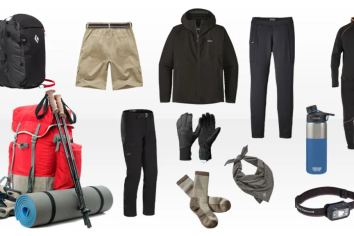
18th Jan, 2023

8th Dec, 2023
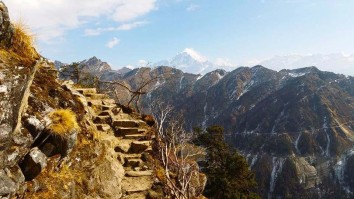
9th Dec, 2023
.jpg)
11th Feb, 2025
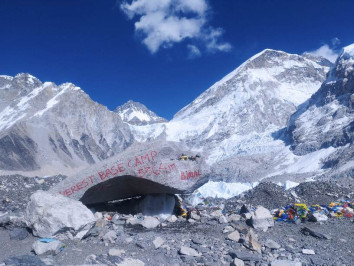
13th Dec, 2023
_11zon.jpg)
18th Dec, 2023
.jpg)
2nd Jan, 2024
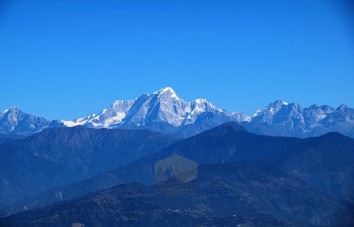
3rd Jan, 2024
_11zon.jpg)
23rd Jun, 2025

24th Jan, 2024
.jpg)
30th Jan, 2024

4th Feb, 2024

5th Feb, 2024
-4.jpg)
6th Feb, 2024

12th Feb, 2024
_11zon.jpg)
18th Feb, 2024
-1.jpg)
7th Mar, 2024

12th Mar, 2024
.jpg)
13th Mar, 2024
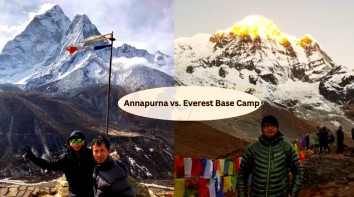
20th Mar, 2024
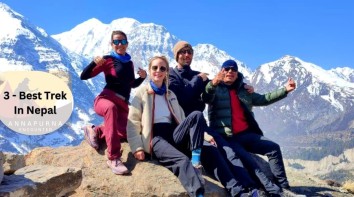
26th Mar, 2024

14th Jan, 2025

14th Jan, 2025
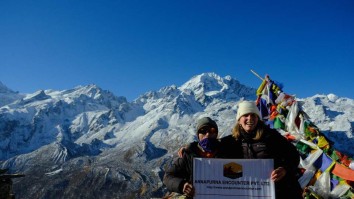
16th Jan, 2025

18th Jan, 2025

20th Jan, 2025

24th Jan, 2025

5th Feb, 2025

5th Feb, 2025
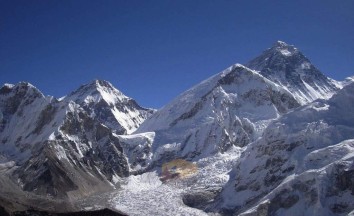
9th Feb, 2025

14th Mar, 2025
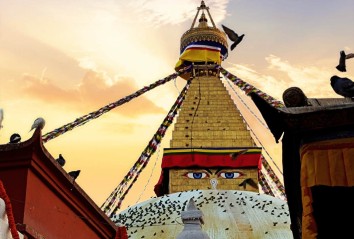
3rd Apr, 2025
.jpg)
11th Apr, 2025
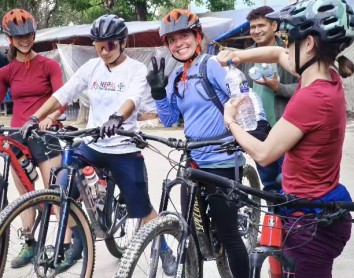
16th Apr, 2025
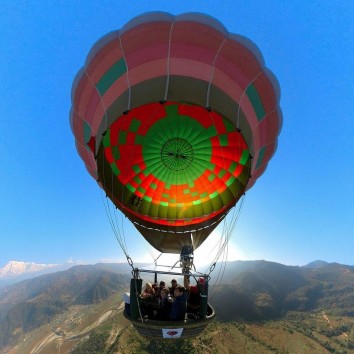
20th Apr, 2025
.jpg)
27th May, 2025
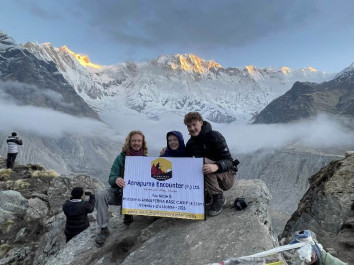
14th Jun, 2025

15th Jun, 2025
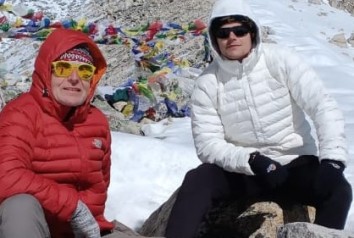
17th Jun, 2025
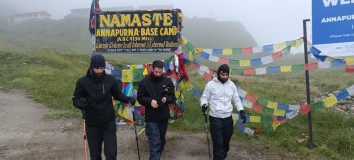
18th Jun, 2025
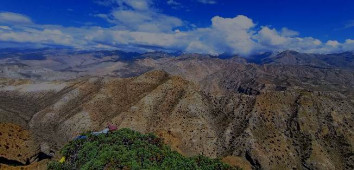
19th Jun, 2025

23rd Jun, 2025
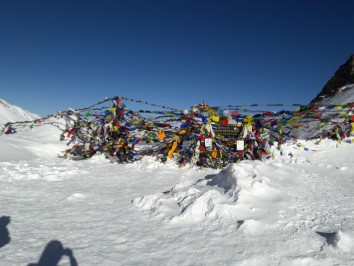
24th Jul, 2025


.jpg)
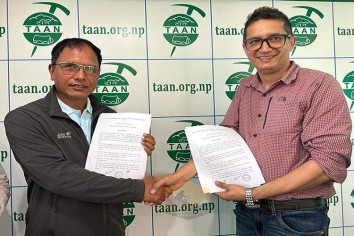
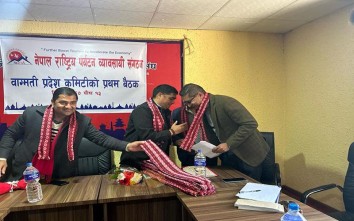
.jpg)
_11zon.jpg)
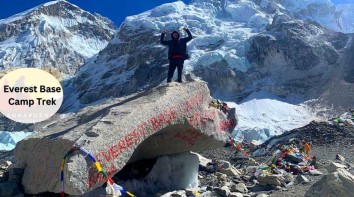
.jpg)
.jpg)
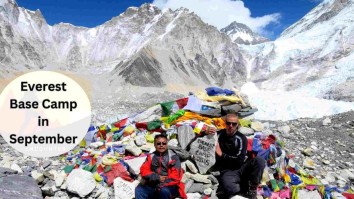
.png)
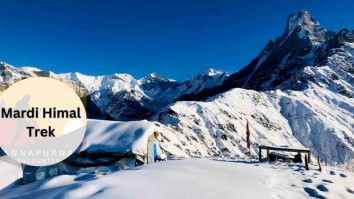
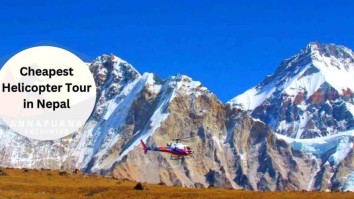
.jpg)
.jpg)
-1.jpg)
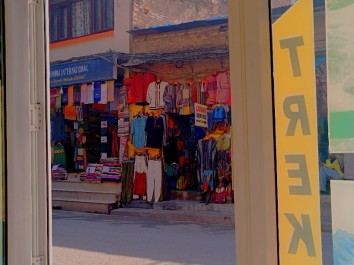
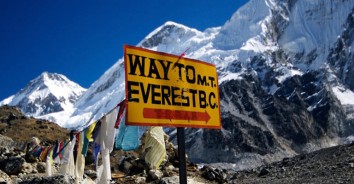
.jpg)
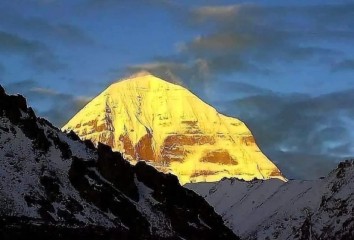
-1.jpg)
